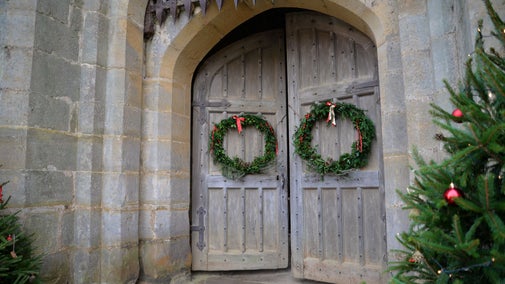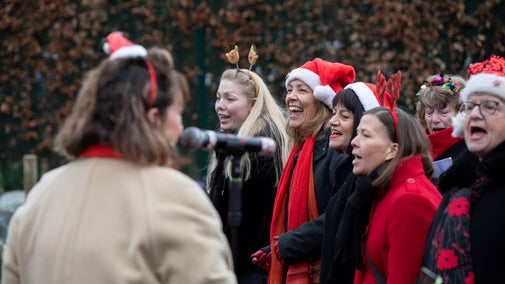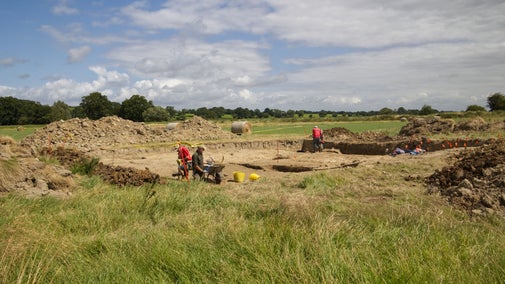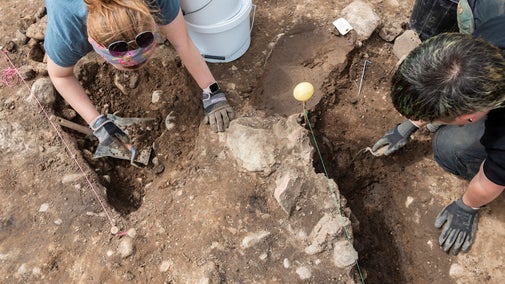
Become a member
Join today and help protect nature, beauty and history – for everyone, for ever. Enjoy access to more than 500 places with National Trust membership.
Step into history at Bodiam Castle. This 14th-century moated castle with a ruined interior features spiral staircases, battlements and a portcullis.
Bodiam, near Robertsbridge, East Sussex, TN32 5UA

| Asset | Opening time |
|---|---|
| Castle | 10:00 - 15:30 |
| Car Park | 09:45 - 16:00 |
| Shop | 10:00 - 16:00 |
| Wharf Tea-room | 10:00 - 16:00 |
| Castle grounds | 10:00 - 16:00 |
| Riverside Second-hand Bookshop | 10:00 - 15:30 |
You don't need to book your visit in advance. Last admission to the castle is 30 minutes before closure. Castle View Café opens seasonally.
| Ticket type | With Gift Aid | Without Gift Aid |
|---|---|---|
| Adult (18+) | £13.20 | £12.00 |
| Child (5-17) under 5s free | £6.60 | £6.00 |
| Family (2 Adults and up to 3 children) | £33.00 | £30.00 |
| Family, one adult | £19.80 | £18.00 |
Assistance dogs only in the castle, Wharf Tea-room and shop
Second-hand bookshop by the river
Café opposite the castle entrance opens seasonally, serving drinks and snacks
Free parking for National Trust members, non-members £5 per car.
Dogs on short leads welcome in the grounds and Castle View Café. Assistance dogs only inside the castle
Shop near the main car park for gifts, seasonal plants and a castle range
Wharf Tea-room overlooking the river serves drinks, snacks and light lunches
Toilets, accessible toilets and baby changing facilities by the car park. Mobile toilets opposite the castle open seasonally
Gravel paths throughout the site with some slopes and undulating terrain. Level access to the castle courtyard only. The towers are reached by steep spiral staircases.
Accessible route and/or map - more informationAccessible toilet by the main car park next to the tea-room
Braille guides (SEB and VEB versions) available on request
Five accessible parking spaces in the main car park, near the tea-room and shop
Induction loops in visitor reception, tea-room and shop
Large print floorplan and castle guidebook available on request
Level access to the Wharf Tea-Room via gravel car park and paved area
One of the two entrances to the shop has level access via a paved area
Level access to the castle courtyard. The towers are reached by steep spiral staircases
A buggy service is available for transfers between visitor reception and the castle.
Manual wheelchair available at visitor reception
Bring your little ones for a day of adventure at Bodiam Castle! Explore the castle and its grounds while enjoying a variety of family-friendly events. Upcoming activities include an Easter egg hunt, have-a-go archery, crafts, living history events, and a How to Train Your Dragon trail. There's something for everyone to enjoy!

Get involved with a variety of events throughout the year at Bodiam Castle! Coming up: Christmas wreath workshops, family trail, crafts, live music, and more!

Bodiam Castle is a two pawprint rated place. Find out about visiting with your dog, where you can explore the castle grounds surrounding the moat together.

Picturesque and romantic, Bodiam Castle in East Sussex is a great place to explore on a pre-booked group trip, or a school visit.

Discover what to see and do at Bodiam Castle. Climb the stone towers to take in the views, learn about defending a medieval castle and explore the impressive ruins.

This map and guide will help you discover what remains of the medieval castle, and how it came to be preserved.

Medieval castle with original moat, towers and portcullis. Scheduled ancient monument with open air interior.
Landscape surrounding the castle includes wetland, grassland, veteran tree and deadwood habitats, alongside archaeological features. Nationally-significant bat maternity roost.
Wharf Tea-room overlooks the River Rother and serves hot and cold drinks, light lunches and homemade cakes. Castle View Café serves drinks and snacks.
The shop is filled with gifts, homeware, a castle range and seasonal selection of plants. Riverside bookshop is stocked with pre-loved books.
Discover Christmas medieval-style at Bodiam Castle. Enjoy winter walks in the fresh air, treats in the tea-room, listen to stories in the castle and take part in a Christmas trail. With twinkling lights in tower rooms and Father Christmas’s sleigh in the castle courtyard, immerse yourself in the festive spirit.

A naughty elf has left gifts lying around the castle! Can you help Father Christmas and spot them all? Dates: Saturday 29 November – Sunday 4 January (closed 24 & 25 December) | Time: 10am–3pm | Price: £2 per trail, includes a small Christmas themed prize.

Pooch passport is back! Explore new places with your furry friend until 28 February 2026. Find out more about the scheme and discover dog-friendly places to explore together. 1 September 2025 to 28 February 2026

Celebrate the festive season with family and friends over a delicious two or three-course Christmas lunch in the Wharf Tea-room. Monday 24 November to Monday 22 December (weekdays only) .

Be enchanted this Christmas by festive tales of dragons, knights, and castles as part of winter storytelling on selected weekend dates. Running throughout the day and 15-20 minutes in length, these tales are held in a Christmas grotto tower room. Suitable for young children and perfect short drop-in sessions for families. Dates: 29, 30 November 6, 7, 13, 14, 20, 21 December | Times: 11.30am - 2.30pm

This Christmas, come and enjoy your festive favourites performed by local music group, Cake and Wine Club Choir, as they spread some Christmas cheer in the castle courtyard. Cake and Wine Club Choir are a local group of singers from Heathfield who love performing together. Run by professional singer Angela Brooks, who has performed alongside the likes of Will Young, Robbie Williams and Blur. Date: Sunday 21 December | Time: 11.45am to 12.30pm | Price: Free with admission

There’s plenty of things to see and do waiting to be discovered at Bodiam Castle. Step into history and take part in a host of family-friendly events all year round, including a medieval fair, re-enactment groups, activity trails, and more!
Discover things to see and do on a family visit to Bodiam Castle. Join in with activities and let your imagination run riot in this Medieval setting.

Discover what to see and do at Bodiam Castle. Climb the stone towers to take in the views, learn about defending a medieval castle and explore the impressive ruins.

Discover what to see and do in the grounds of Bodiam Castle. Take a riverside walk, stop for a picnic or look for wildlife – from rare bees to bats.

Bodiam Castle is a two pawprint rated place. Find out about visiting with your dog, where you can explore the castle grounds surrounding the moat together.

Discover the remnants of the past at Bodiam Castle through the work of recent archaeology digs.

Enjoy food and drink with a view at Bodiam Castle. Shop for gifts or a souvenir of your visit and browse for the perfect pre-loved book.

Find the Christmas presents hidden around the medieval castle on this festive trail.
Unwrap Bodiam Castle this Christmas. With twinkling lights, Christmas trees in tower rooms, Father Christmas’s sleigh in the castle courtyard and warming treats in the Wharf tea-room, experience the charm of Bodiam Castle this Christmas.
Celebrate the festive season with family and friends over a delicious two or three-course Christmas lunch in the Wharf Tea-room.
Enjoy the magic of Christmas through festive stories told in a cosy castle tower room.
Enjoy a selection of Christmas songs performed by a local music group against the stunning backdrop of the medieval ruins of Bodiam Castle.
Bodiam Castle invites you to take a magical wander inspired by Moominvalley this winter, with a family trail around the castle, meeting characters from the Moomin stories.
Set in the heart of an historic landscape, with spiral staircases, battlements and a portcullis, 14th century Bodiam Castle is one of Britain's most picturesque and romantic ancient monuments.
Windows where arrows were once loosed, a tower that was once a look-out and ruins that were once walked upon by knights; this is a place where you can relive your childhood memories and let your imagination run riot.
A wide moat encircles the seemingly untouched Medieval exterior. In the impressive gatehouse is the castle's original wooden portcullis, an extremely rare example of its kind. In the courtyard, enough of the interior ruins survive to give an impression of castle life.
Discover the history of Bodiam Castle. Find out who built it, its royal connections and what historic graffiti can tell us about the castle’s past.

Would you like to volunteer at Bodiam Castle? Come and join our friendly team, which helps to look after this 14th-century moated castle in tranquil East Sussex.

Interested in making the most of the National Trust near you in Sussex? Members of National Trust supporter groups across Sussex help to raise funds for Bodiam Castle and other local properties, while also getting together for days out, talks and volunteering at their local places. Discover how you can get involved.

Explore the objects and works of art we care for at Bodiam Castle on the National Trust Collections website.

Discover the National Trust's work to look after Bodiam Castle and the surrounding historic landscape.

Discover the remnants of the past at Bodiam Castle through the work of recent archaeology digs.

Reintroducing meadows around Bodiam Castle isn’t just going to make for an attractive landscape, it also creates an abundant new environment for wildlife and wildflowers.


Join today and help protect nature, beauty and history – for everyone, for ever. Enjoy access to more than 500 places with National Trust membership.
By sharing your email address you’re agreeing to receive marketing emails from the National Trust and confirm you’re 18 years old or over. Please see our for more information on how we look after your personal data.